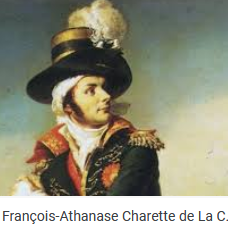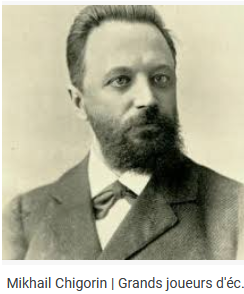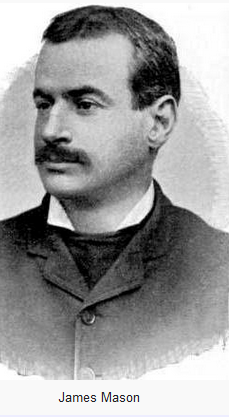No technical problems for this course, which seems to confirm the good performance of the new version of Team Viewer.
Only the core group was present, probably because of the holidays and the Bundesliga.
Below is the animated version of the Masterclass.
Have a good read
P.S.: contrary to what was announced in the previous course, Shrove Tuesday is now, and you'll have to go into Lent until the next course!
Master's word
"
I have shed blood, but bloodletting is part of the combinations of political medicine" (Napoleon in the film "Austerlitz" by Abel Gance).
"In France, we only admire the impossible" (ibidem).
"The drama of old age is not that you get old, it is that you stay young" (O. Wilde).
"Have you noticed that the number of the Beast is also the sum of the integers from 1 to 36, thus of all the numbers of the roulette wheel?".
"I want to be the Queen of Paris -- Very well, don't go out of there, and even... don't go out of here!" (S. Guitry).

"I believed then that chess problems were composed either by prisoners or by people unable to move" (S. Didukh).
Note: The two first quotations had been selected before I knew that a mini-tournament in honour of the aforementioned emperor was going to take place on the Vendée soil. It is natural, now, to add this one, for a necessary counterweight.
"My soul to God, my life to the King, my heart to the Ladies, my honour to myself" (F.-A. Charette de la Contrie).
Our introductory study is a beautiful domination of a Black Rook, which will not be able to sacrifice itself against the White Bishop, leaving two impotent Knights. The 4th, 5th & 6th moves are very precise. Enjoy it well!

The pawn endgame is not very difficult, but it is a joy. Then an orgy of heavy pieces: studies are not always endgames ! Although... the refutation of a try is one, not simple at all!
A very difficult Bishop + Knight + pawn-Rook against Rook endgame occurred in a famous Tchigorine-Mason game of 1901. White won by a nice tactical pattern (a kind of echo of our first study), but the complexity of this endgame escaped the two players, which is understandable: they were playing with their own brains and after the game, did not have modern electronic crutches.  A little research shows us that the famous Kotov lost the same final against a Swiss master in 1946. That can happen, but 70 years later, the people of "chess base", a hyper-media site, have understood absolutely nothing of what is going on, even though they have the said crutches, see the "megabase" (sic!) 2018. But of course, if I write that these people are clowns, as I once did on a sub-forum, I will be labelled as an extremist! Details on request. In the meantime, enjoy the many reciprocal zugzwangs that pop up from who knows where! And the switchbacks are also legion.
A little research shows us that the famous Kotov lost the same final against a Swiss master in 1946. That can happen, but 70 years later, the people of "chess base", a hyper-media site, have understood absolutely nothing of what is going on, even though they have the said crutches, see the "megabase" (sic!) 2018. But of course, if I write that these people are clowns, as I once did on a sub-forum, I will be labelled as an extremist! Details on request. In the meantime, enjoy the many reciprocal zugzwangs that pop up from who knows where! And the switchbacks are also legion.
The difficulties with this material are not new. With a Knight-pawn instead of a rook-pawn, a study by Vladimir Bron was awarded first prize half a century ago in the competition organised for André Chéron's 70th birthday. Bad luck, the study was unsolvable. As we keep repeating, at the time one used only one's own brain, and therefore people who maliciously criticize the analysts of the time, while claiming, as a perfect phoney, that they should not be denigrated, are a bunch of hacks. Do you see an allusion to a prolific and catastrophic author with a monosyllabic name? You have a good imagination.
Exercises for next month: a pawn endgame to get back to basics, a Knights endgame rescue, a rook acrobatics.


Today's game presents us with an "obvious" quality sacrifice, as it gives a comfortable game. Another question is whether it really gives an advantage and, if so, how much. An essential pedagogical element is training with heterogeneous materials. Is this currently taught? But, by the way, where are the French teachers? Judging by the desperate lack of succession in our country, they have almost all gone abroad, and those who remain are particularly mediocre.
For a change, a fairy tale exercise for the next lesson: put a white knight on f4 and a white pawn on g4 on the chessboard. That's all. There is no White King. The question is: add the black King and a white Queen so as to obtain an illegal cluster (invented by T.R. Dawson in 1933) of 4 units, (thus wQ + wN + wP + bK), such that if we remove any of the 3 white units, the position becomes legal. Oh, I forgot the essential: we are in Martian circé (invented by R.-J. Millour in 1980), which means that a unit can capture (or check) only from its presumed birth square. For example a white rook on a white square checks from h1: with a bK on h8, the move Ra3-a4 checks. Exercise composed by D. Innocenti.
Some 2# for practice. The 4th (Danish) seemed to us the most difficult. The last one seems to have been composed by a woman ("Laurie Hill"). Is this a pseudonym? Possibly, since C. Hill was an alias of B.G. Laws. Moreover, this name is feminine in France, but often masculine on the other side of the Channel. I shall continue to search desperately for female composers...
Fiftieth anniversary of the death of Pierre Biscay. The International Federation (FIDE) was, as is well known, created in 1924 by Pierre Vincent, a man of an
immense culture, sportsman and chess enthusiast. Another Pierre (Biscay) was President of the French Federation (FFE) from 1932 to 1955. As well as being a correspondence or blind player, he was a brilliant problemist. What followed was more chaotic. Among the presidents who followed, what are we to think of the one who, in a tournament, proposed to several players to lose deliberately in order to favour an international master norm? And what to think of the last one to date, who goes so far as to refuse any right to existence to Artistic Chess ? One measures the decline.
was President of the French Federation (FFE) from 1932 to 1955. As well as being a correspondence or blind player, he was a brilliant problemist. What followed was more chaotic. Among the presidents who followed, what are we to think of the one who, in a tournament, proposed to several players to lose deliberately in order to favour an international master norm? And what to think of the last one to date, who goes so far as to refuse any right to existence to Artistic Chess ? One measures the decline.
His style is strategic, he collaborated with Chéron for his 1934 book, entitled rightly "Les Echecs artistiques". After a spectacular 2#, here is indeed the strategy with, in 3#, a Roman theme, a Novotny, an anti-dual; then in 4#, an ambush and a corner visit. Finally the 5#, which looks like a 4#, until a fine defence is found. Another 5# had been shown on 15 April 2014 http://lecoursdumaitre.e-monsite.com/pages/cours/cat-2014/15-avril-2014.html .
Also a tribute to the Lithuanian composer M. Rimkus, who died in February. One of the best composers in the world in the category "helpmates". A beautiful echo-chameleon in 8.5 (White starts and mate at his 9th) and 4 echo mates (counting the twin) in a 3.5. Solutions on request, as is traditional!
Have a good time. See you in April. Adeus.
Comments
1 Alain On Saturday, july 30, 2022